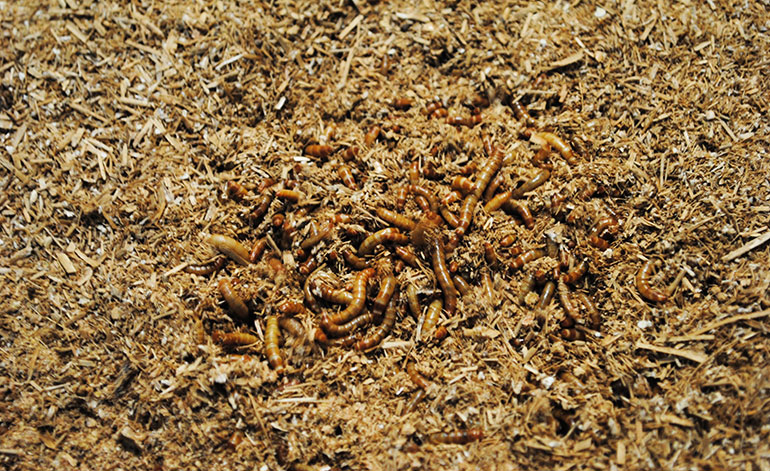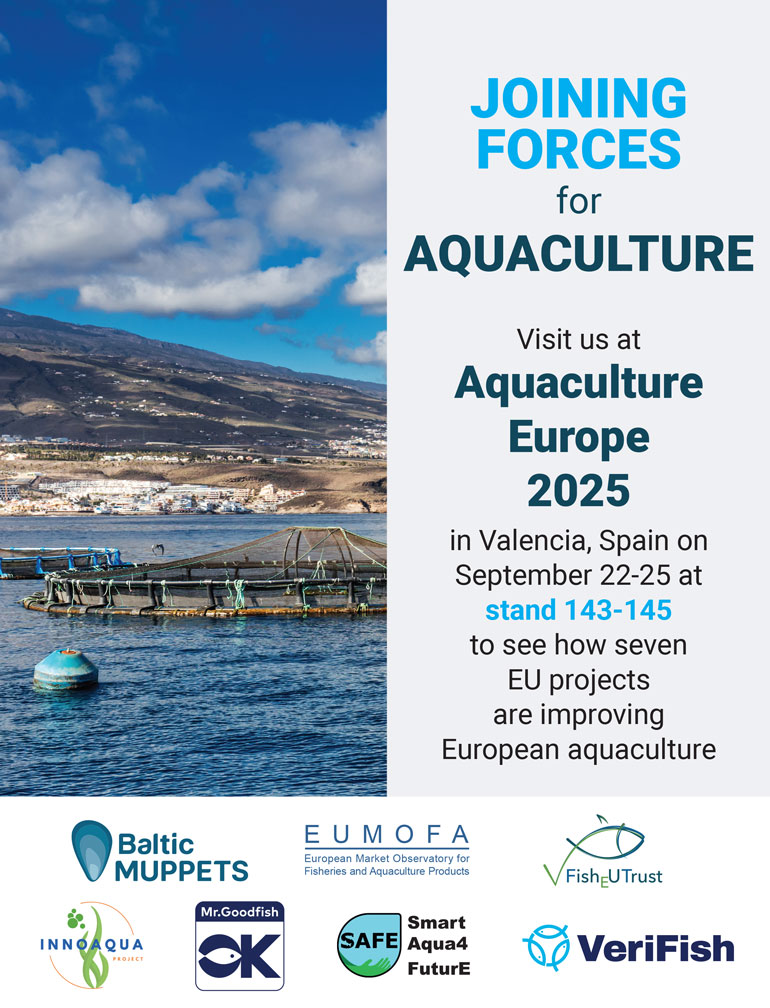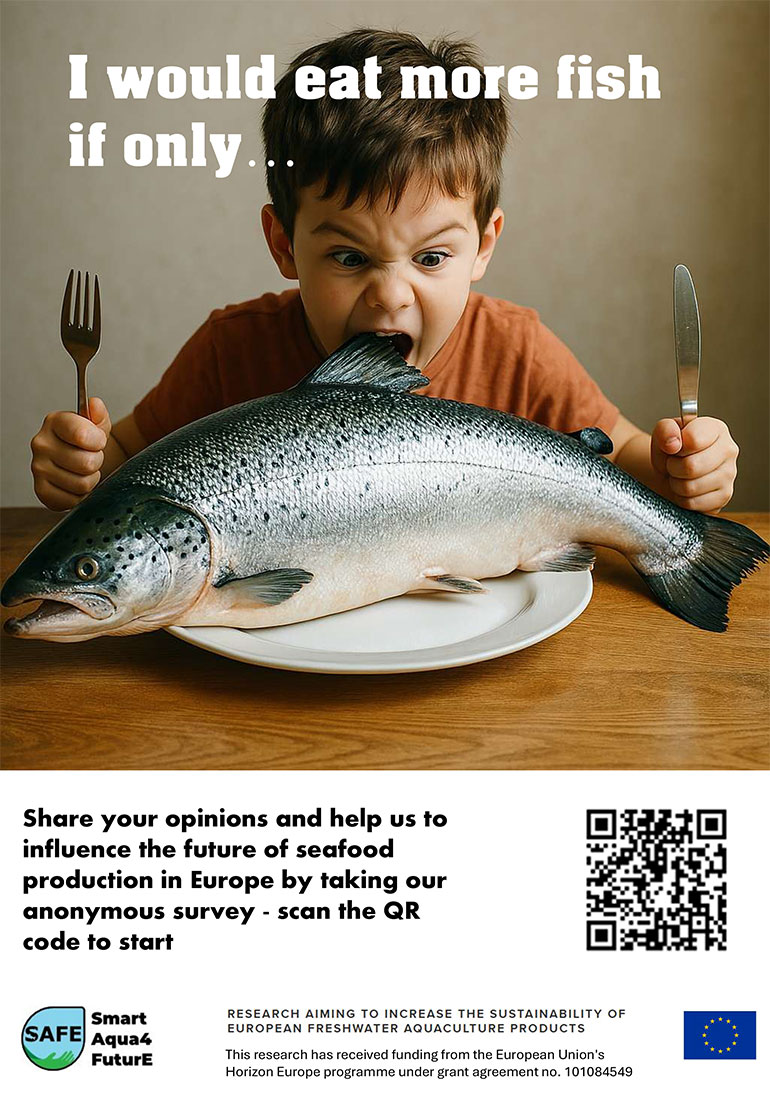
As part of Subtask 2.3.3 of the SAFE project, Tebrio conducted laboratory trials using duckweed, watercress, and spent mushroom substrate (SMS) as alternative substrates for feeding mealworm larvae (Tenebrio molitor). The best-performing substrate was subsequently validated in an industrial-scale trial. Mealworm meal produced from both the laboratory and industrial trials was then used as experimental feed in fish trials under WP4.
Preparation of Experimental Diets
Watercress and duckweed biomass were produced by ZUT and processed by Waister. SMS by-products were supplied by CTICH.
Experimental diets were formulated with varying inclusion levels of the three biomasses. Each substrate was ground and incorporated into the standard mealworm diet at predetermined ratios. Every experimental diet was tested in triplicate and compared against a control diet.
Laboratory Growth Trials
Mealworm larvae of uniform age were reared in laboratory-scale boxes containing either the experimental or control diets over a period of four weeks. Each week, larvae, frass, and residual substrate were separated and weighed. The larvae were then returned to the boxes with fresh feed.
At the conclusion of the trial, the following parameters were assessed:
•Average biomass gain (g)
•Growth yield (%)
•Feed conversion ratio (FCR)
•Frass production (g)
A growth improvement exceeding 10% compared with the standard diet was defined as a significant positive result.
Larvae were reared until the onset of pupation. At this stage, they were euthanised by thermal treatment, dehydrated, and ground to produce non-defatted meal.
The nutritional profiles of the resulting frass and mealworm meal were analysed. Samples were distributed as follows:
•Frass: sent to CTICH for mushroom production trials (WP2)
•Meal: sent to CIIMAR for fish trials (WP4)
•Both frass and meal: sent to CELABOR for further analysis (WP3)
Industrial-Scale Production
Based on lab results, a diet containing SMS was selected to be used in an industrial scale-up trial with the objective of validating the lab results and producing the amount of meal needed to cover all the fish trials planned in WP4.
SMS was obtained from CTICH. The material was dried and milled, and included in the standard mealworm feed at 20% concentration (SAFE diet).
For the industrial batch production, larvae were allocated in boxes with the SAFE diet. They were grown at optimum temperature and humidity conditions. As per the standard production procedure, the frass and substrate were separated every week, and the remaining substrate was put back into the boxes and complemented with standard diet. Larvae were grown up to their highest weight right before transforming into pupae. They were fasted for 24h before sacrifice by thermal treatment. The biomass was defatted by mechanical means to obtain both protein and fat fractions. The products were analysed for nutritional profile, packed and sent to the different partners.





